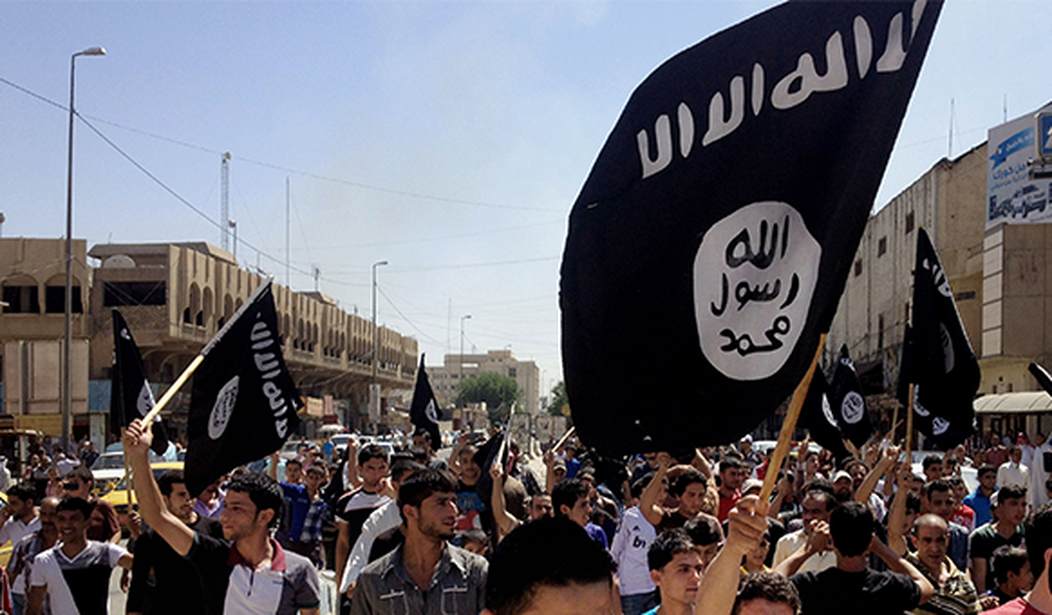As reported by my colleague Brandon Morse, a US raid in Syria has resulted in the suicide death of yet another ISIS leader, “ISIS Leader Dead After Compound Raided, Biden Admin Confirms.” Haji Abdullah chose to blow himself and his family up after being surrounded by US Special Forces.
President Biden reported to the nation about the incident in a six-minute televised announcement.
The political question of how significant a development this event is to the global war on terror was raised by my colleague streiff in his op-ed, “An ISIS Leader Has Been Killed Along With 10 Family Members; Is It Significant or Just Theater for Joe Biden?”
He’s not alone in asking that question; a few minutes after streiff’s piece was published, my internet plugged-in, Libertarian daughter texted me, asking if our claim that we killed Abdullah was legitimate. And also, what’s the point, if there’s another leader in waiting to take over the movement? Coming from two very different mindsets, both are questioning the timing and framing of the incident.
My own assessment of things is less conspiratorial and more strategic. The so-called “War on Terror” has been ongoing for many years. The campaign against the Islamic State of Iraq and Syria, which emerged in 2014 as an offshoot of the Al Qaeda movement, is now in its eighth year.
ISIS, or as it was called during the Obama administration ISIL — alluding to the Levant being another name for greater Syria– swept across Syria and Iraq, prompting two US administrations to re-engage in the region, fighting alongside many former foes against a common threat. The war with ISIS became mingled with factional fighting with the Assad government in Syria, the plight of the Kurds and Yazidis in Iraq and Syria, uneasy alliances with Iran supported Shia militias in Iraq, and an uneasy coalition of countries like the US, Russia, and Turkey in greater Syria.
Eventually, ISIS was driven out of Iraq and took refuge in Syria, where the Abdullah raid took place; and in Afghanistan, where another group of escapees from Iraq took refuge and are now known as ISIS-K.
In Afghanistan, the Taliban government that took over the country following a chaotic US withdrawal in August 2021 now has the responsibility of keeping ISIS-K in check. In Afghanistan. It’s been tough going, with ISIS-K seeming to have established strongholds within the country as noted in Hollie McKay’s exclusive report on kznews, “Inside Afghanistan’s ISIS-K Stronghold: ‘It’s A No-Go Zone Even For The Taliban.’”
But what’s of particular interest in the agenda of ISIS-K in Afghanistan is that it’s becoming a localized agenda movement. ISIS-K’s ire is aimed at overthrowing Pakistan, using Afghanistan as a safe sanctuary. The Taliban downplay the danger. The Pakistanis haven’t closed their border, which is also an indication the threat hasn’t risen to a level of crisis. This is a much smaller agenda than the grand Caliphate dreams of ISIS leader Abu Bakr al-Baghdadi, who also died in a US Special Forces raid in 2019.
The point here is that the long-term, international strategy to steadily degrade the leadership effectiveness of ISIS, known as a decapitation strategy in military campaign parlance, is continuing to progress
Overall, things are presently not going well for ISIS. The attempt to capture Abdullah that resulted in his suicide follows on the heels of failed attempt by ISIS to free prisoners held at a Kurdish-run prison in Syria in late January, “‘Huge ISIS failure’: Detainees in Syria moved to more secure facility after thwarted prison break”. US Special Forces were also involved in this operation, where ISIS fighters failed in their attempt.
As to the timing of events, the prison break attempt was entirely determined by ISIS, no doubt approved by Abdullah while still alive. The intelligence confirming his location may have firmed up in the aftermath of the failed prison break attempt. Such opportunities to execute upon actionable intelligence come few and far between in the war on terror. The window to exploit the advantage is limited. The timing is more about actors like the US Special Forces and other coalition members being able to act on the openings as they present themselves.
It seems, in this case, coalition forces did so.
Does that mean ISIS is no longer a transnational threat? Unfortunately, I think not. ISIS is an extremist manifestation of a cultural movement. A significant, disgruntled diaspora remains a reservoir of radical desire to those who yearn for another shot at creating a Caliphate based on Seventh-century values.
But at this point, the global war on terror, as it pertains to ISIS, is managing down the magnitude of the problem from an international one to isolated regional ones that pose less of an existential threat than it did in 2014.
As a national interest moment, I’d say that’s worth noting with some degree of satisfaction.














Join the conversation as a VIP Member